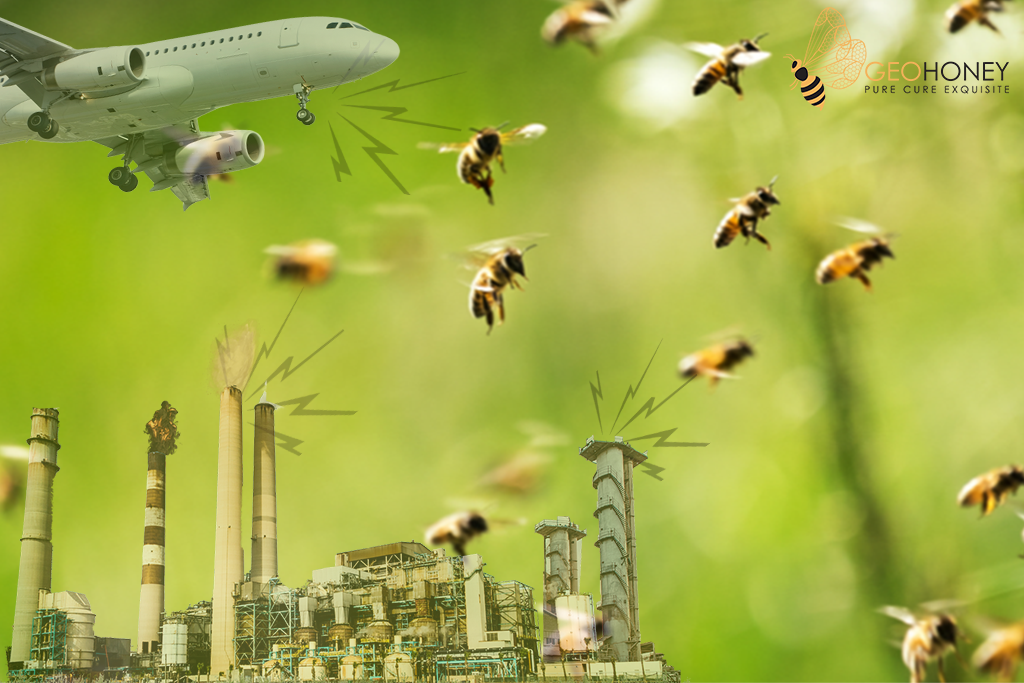- Tokyo: 00:37
- Singapore: 23:37
- Dubai: 19:37
- London: 15:37
- New York: 10:37
How Does Noise Pollution Impact Pollinators?

Noise pollution has become increasingly problematic for human health and the environment. Bustling cities with high-level noise from traffic and industrial activities damage hearing, cause sleep disturbances and disrupt metabolic health. According to the United Nations Environment Programme, 90% of New Yorkers are exposed to noise levels that surpass the World Health Organization’s acceptable decibel range.
However, humans aren’t the only living species negatively affected by excessive sound — noise pollution has also impacted pollinators. Here is everything you need to know about how pollinators react to noise pollution and why protecting them is critical for the environment and food security.
How Noise Pollution Impacts Pollinators
A noisy environment — such as airplane engines, industrial activity and traffic — can disrupt species’ communication and make it harder to hear warning signs and other important messages. According to Mr. Basem Barry, CEO of Geohoney, “Noise pollution creates problems for pollinators communicating with each other, meaning less plants being pollinated, which would be greatly detrimental to our planet."
Disrupted communication also affects species’ ability to find suitable mates since they use vocalization to attract and encourage breeding, resulting in a minimized species population and lower genetic diversity.
Interestingly enough, sound can hinder sight for some species like bats. Bats emit sonar frequencies to detect prey or predators while foraging. However, noisy environments can disorient them, damaging their hearing and changing their vocal pitches.
As a result, bats may enter residential attics through crevices in the roof or siding, thinking they’re resting places like dark caves, trees or rocks. The loss of bat pollinators could have detrimental effects on the 300 fruit species that depend on them for optimal growth, such as bananas and mangoes.
Loss of Pollinators a Grave Concern
Several other factors impact pollinator populations. In addition to noise pollution, urbanization has eradicated natural habitats. Spaces once flourishing with vegetation and flowers are now replaced with concrete and cement.
Researchers have found urban stimulation has reduced pollinator visitations by 54% in some areas — 75% fewer visits to flowers with metal concentrations near roadways. In fact, there are 16,000 known bee species, yet one study shows a 40% reduction in the United Kingdom bee population and nearly 60% in the Netherlands.
Additionally, non-native plant species are inadequate for healthy larval growth and mature pollinator stages — many pollinators search for native plants to satisfy their nutritional needs. Of course, widespread agricultural pesticide, herbicide and fertilizer use has hindered insect pollinator populations, too, with significant implications for the global food supply.
Pollinators — from bees to birds to other species — are also crucial for healthy forests and pharmaceutical purposes. Most medicinal ingredients come from plants. In New Mexico, noisy natural gas wells resulted in far fewer piñon pine seedlings 12 years ago.
Yet, many years after operations ceased, trees have struggled to recover. One reason is the lack of pollinators like the scrub jay, which have episodic memories and sensitivity to industrial noises. It could take time for them to find these places again. Native Americans have long used piñon pine for pharmaceutical purposes, such as an antiseptic for open wounds and sunburns and filling for cavities.
Solutions for Reducing Noise Pollution
With an estimated 68% of the global population expected to live in urban areas by 2050, people must take specific measures to reduce noise pollution and protect pollinator species. Citizens should call their local governments to address noise regulations in their area. For instance, municipalities may install low-noise roads or noise barriers alongside highways. Limited noise zones that prevent truck access down certain streets are another possible solution.
Of course, cities can also create more green spaces and plant trees, shrubs and flowers close together to reduce and block out unwanted noise. At home, consider weatherstripping windows, doors and cracks to keep disoriented animals from mistaking your home as their habitat — this will protect your house from damage and the species itself.
Reducing Noise Pollution Is Crucial for Protecting Pollinator Populations
Humans risk biodiversity loss and food insecurity without reducing noise pollution for pollinator populations. Therefore, creating quiet spaces and boosting urban habitats to support pollinator species is critical.
Writer: Jane Marsh (https://janesmarsh.com/)




This will greatly affect them, they won't be able to protect their hives, and because of that other pests might attack their hives.
This noise pollution is very crucial to our pollinators, it disturbs them from pollinating and in producing more honey.
Indeed noise pollution can create trouble to our pollinator.
It also makes them aggressive. Bees will become disorientated and stressed as well.